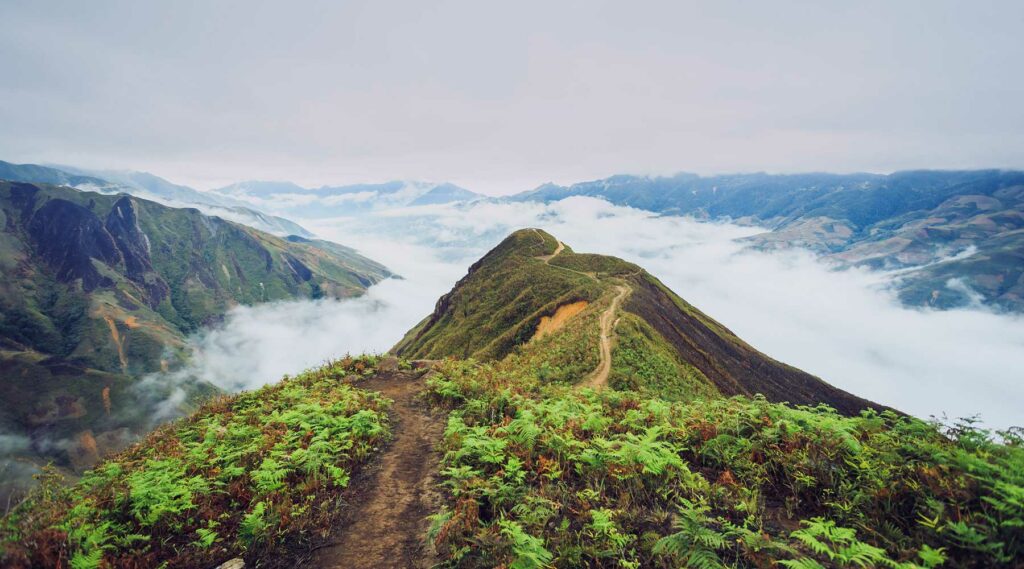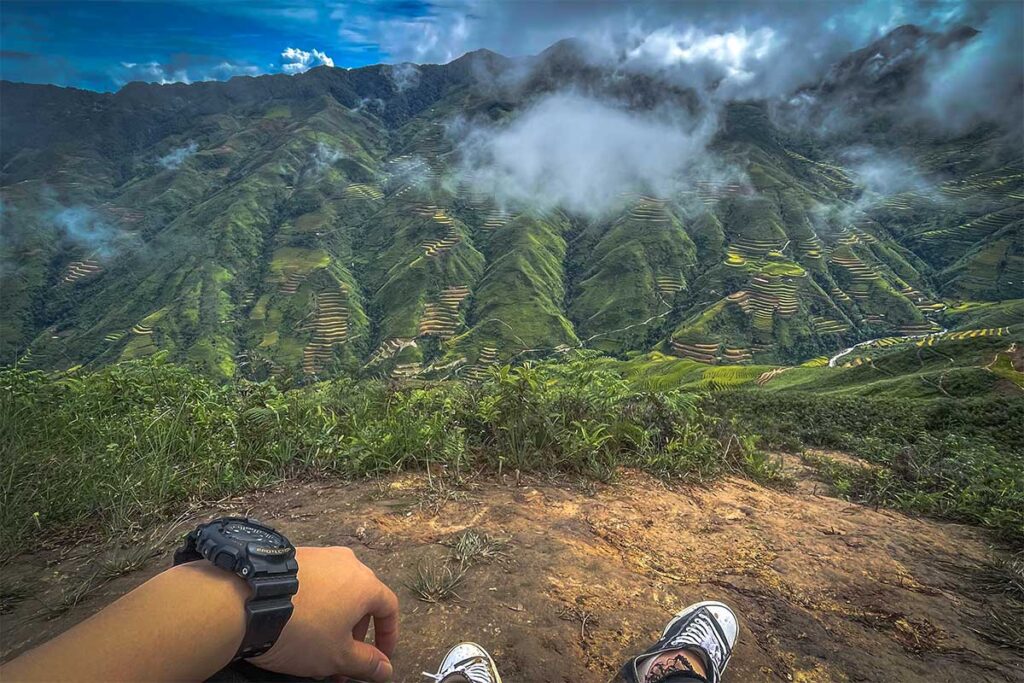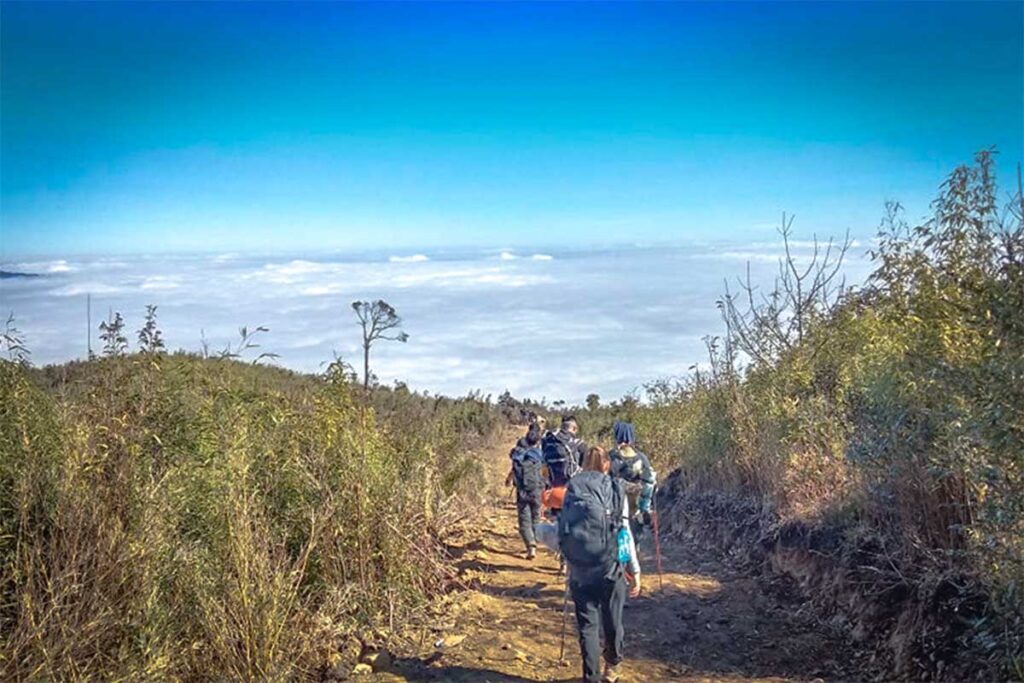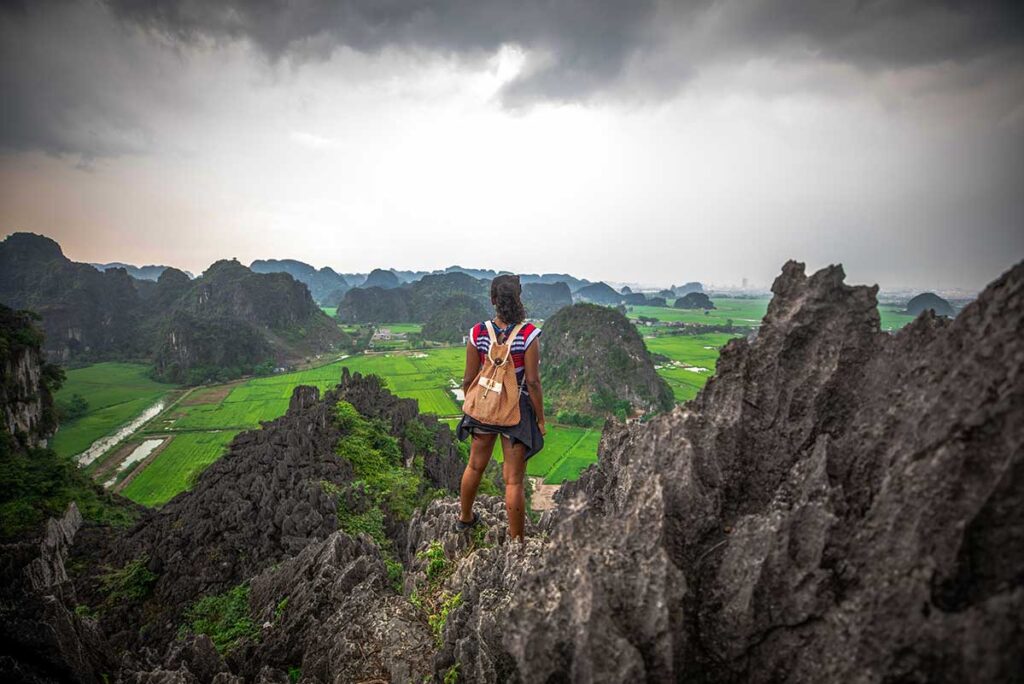What is Ta Xua like?
Ta Xua is a remote mountain range and nature reserve in Bac Yen District, Son La Province, close to the border with Yen Bai. It’s part of the Ta Xua Nature Reserve, a protected area known for rich biodiversity, high-altitude forests, and rare wildlife. At 2,865 meters, Ta Xua Peak ranks among Vietnam’s ten highest mountains.
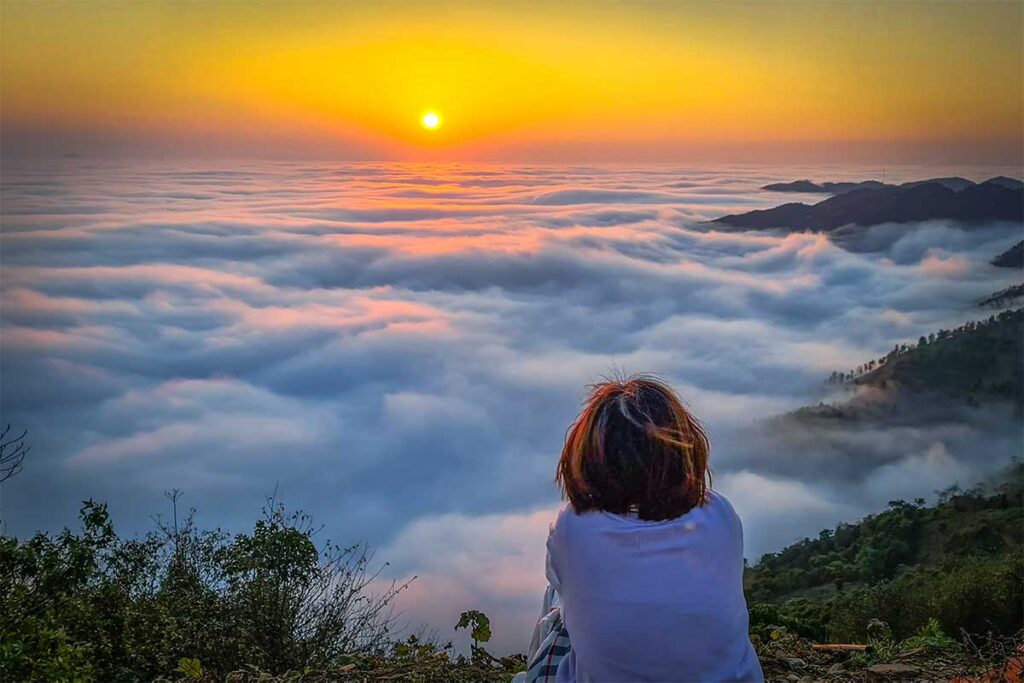
One of the most iconic features is a narrow ridgeline where three major peaks form a jagged crest resembling the back of a dinosaur—often captured in dramatic drone footage online. But Ta Xua is best known for its cloud-hunting appeal. On cold, humid mornings, a thick sea of clouds rolls through the valleys, making the peaks feel like islands floating in the sky.
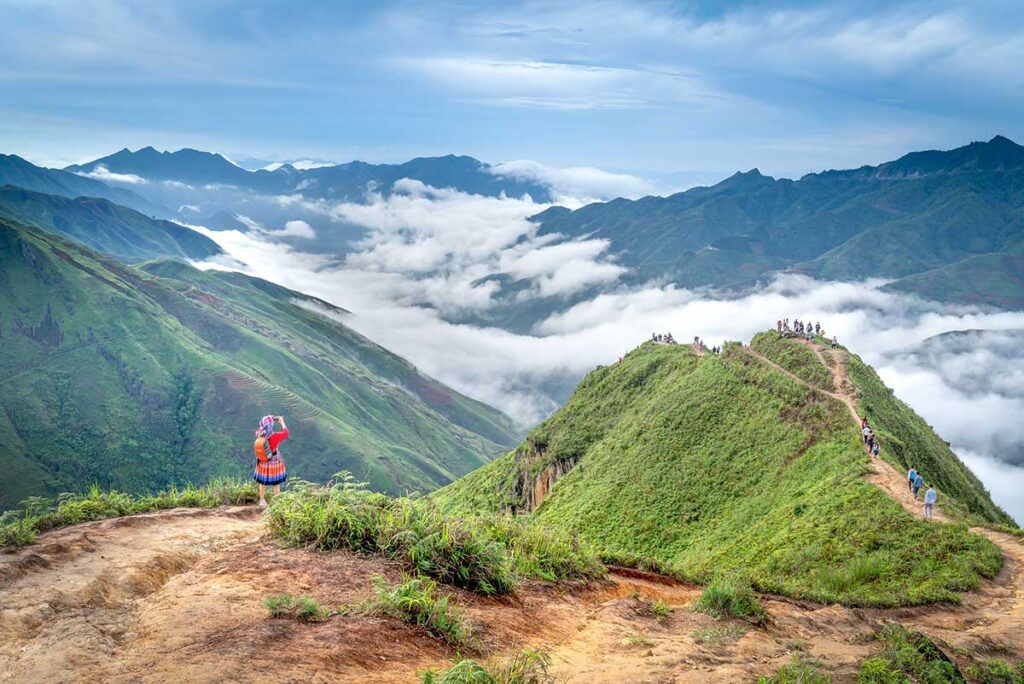
While trekking to the cloud spots or peak is a top activity, there are also lighter walks, herbal hot baths with H’mong locals, and quiet village stays. Ta Xua is still far off the beaten path for foreign travelers—although it’s grown in popularity among Vietnamese adventurers thanks to viral videos and weekend getaways from Hanoi. The closest better-known destination is Moc Chau, but even that is relatively undiscovered by international visitors.
How to get to Ta Xua
Reaching Ta Xua has become much easier in recent years. Thanks to its rising popularity among Vietnamese travelers, you can now take direct limousine buses from Hanoi to Bac Yen, the small town right at the base of the mountain—just 10 km from the main trekking area. From Bac Yen, the road continues through Ta Xua Nature Reserve, with plenty of homestays and even some comfortable ecolodge-style accommodations.
Travel tip: Getting to Ta Xua is now quite straightforward—but planning treks, navigating trails, and organizing overnight camping is a different story. For a seamless experience that includes transport, local guides, and hiking logistics, consider one of our guided tours.
If you prefer to travel independently, keep reading for detailed travel options. Just remember: getting to Ta Xua is only the first part—the trekking itself can be challenging if you don’t speak Vietnamese or aren’t familiar with local routes. Tagging along with a guide or joining a local group can make a big difference.
Direct buses to Ta Xua from Hanoi
The easiest way to reach Ta Xua is by limousine van from Hanoi. These comfortable vehicles go straight to Bac Yen Town, taking around 4.5 to 5.5 hours depending on traffic and pickup/drop-off location in Hanoi.
This option has become popular with Vietnamese travelers, so tickets are relatively easy to book. From Bac Yen, it’s only about 10 km to the main cloud-hunting area and trekking start point. You can take a local taxi, hop on the back of a motorbike, or ask your accommodation for pickup.
Best things to do in Ta Xua
Ta Xua offers a mix of dramatic mountain scenery, light adventure, and peaceful cultural experiences. Whether you’re here for sunrise clouds, a challenging trek, or just a scenic retreat, the highlights below cover the best ways to experience this remote highland destination.
1. Cloud Hunting at Dinosaur Spine (Main Viewpoint)
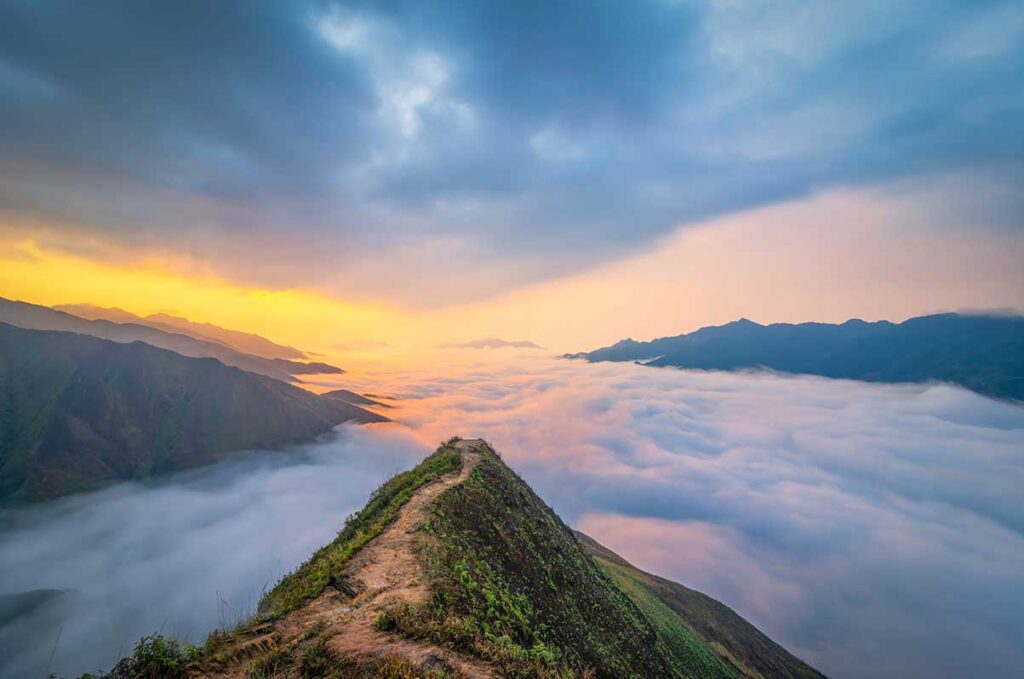
This is the most famous spot in Ta Xua and what draws most travelers to the area. Known locally as “Song Lung Khung Long” (Dinosaur Spine), the narrow ridge juts out dramatically into a valley, with steep drops on both sides. On cold mornings with high humidity—especially from November to March—it becomes the perfect place to witness a sea of clouds rolling below you.
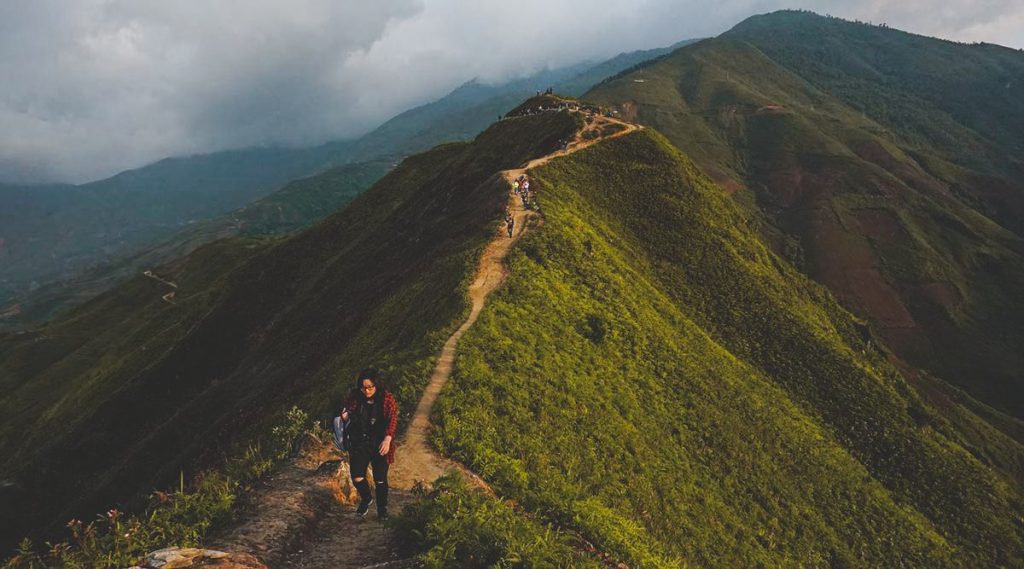
The viewpoint itself is only about 1 km walk (one way) from the small parking area and café near the top. Some travelers opt to ride the last stretch by motorbike, either self-driving or jumping on the back with a local rider (usually 50,000–60,000 VND). However, the road is rocky and uneven, so unless you’re confident on a bike, walking is the safer option—and takes less than 30 minutes.
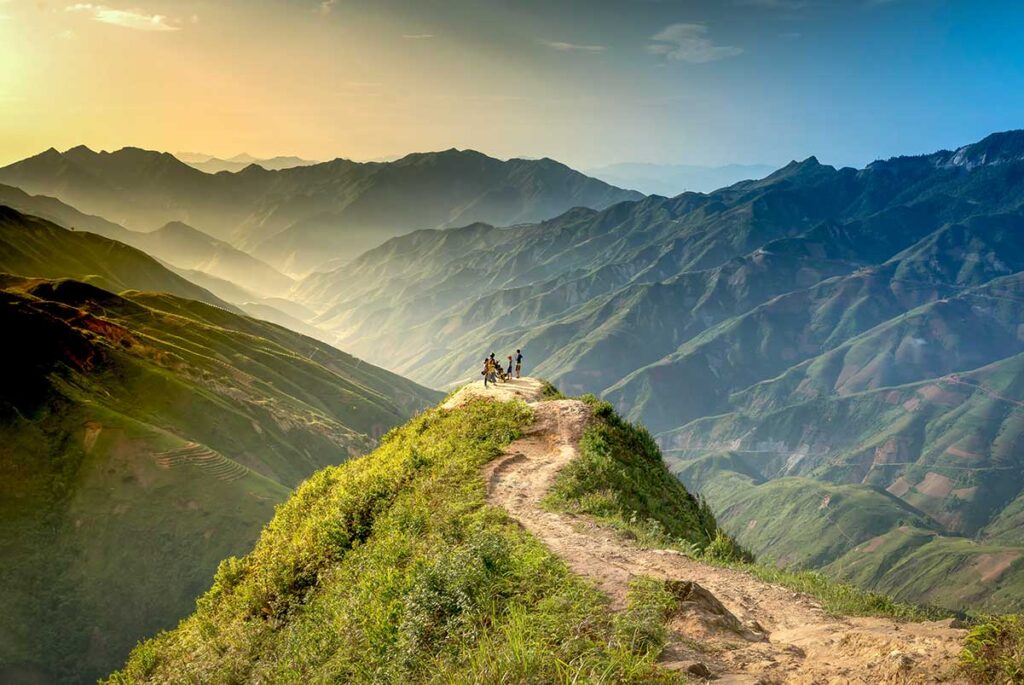
The best time to arrive is between 5:30 and 6:30 AM to catch the clouds before the sun burns them off. Even without clouds, the view from the spine is impressive, with layered mountain ranges stretching to the horizon.
Travel tip: Bring a flashlight or headlamp if walking before sunrise, and wear shoes with good grip—the trail can be slippery when wet.
2. Light cloud hunting from the main road and cafés
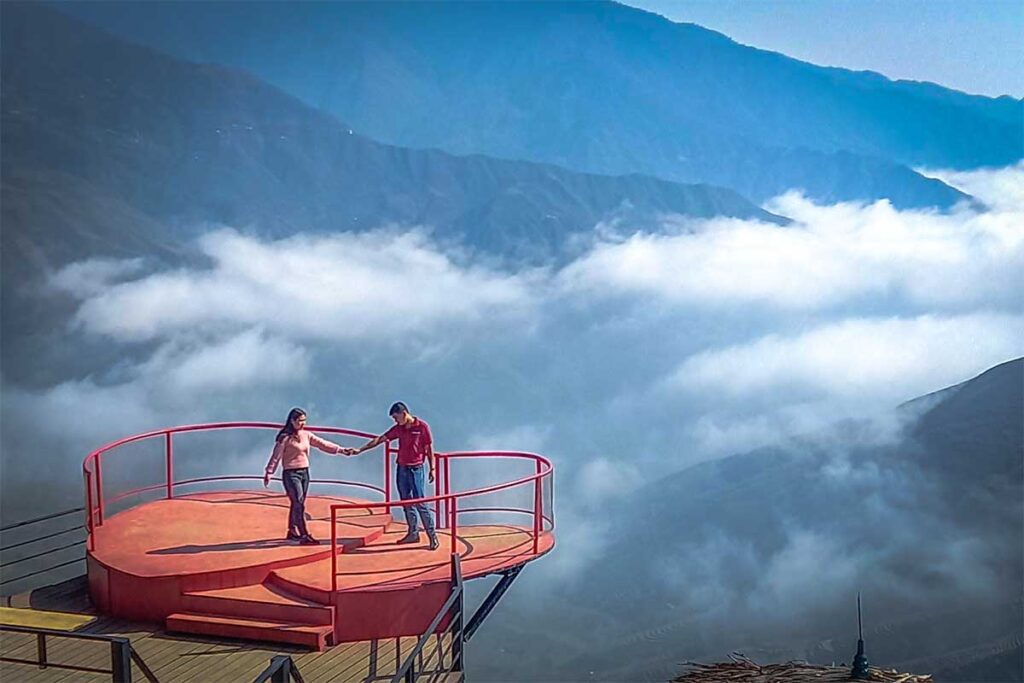
If you’re not up for hiking or want a more relaxed experience, there are still plenty of places to enjoy the cloud sea without leaving the road. In fact, many of the homestays and cafés in Ta Xua are built directly along ridgelines and offer incredible panoramic views—especially around dawn.
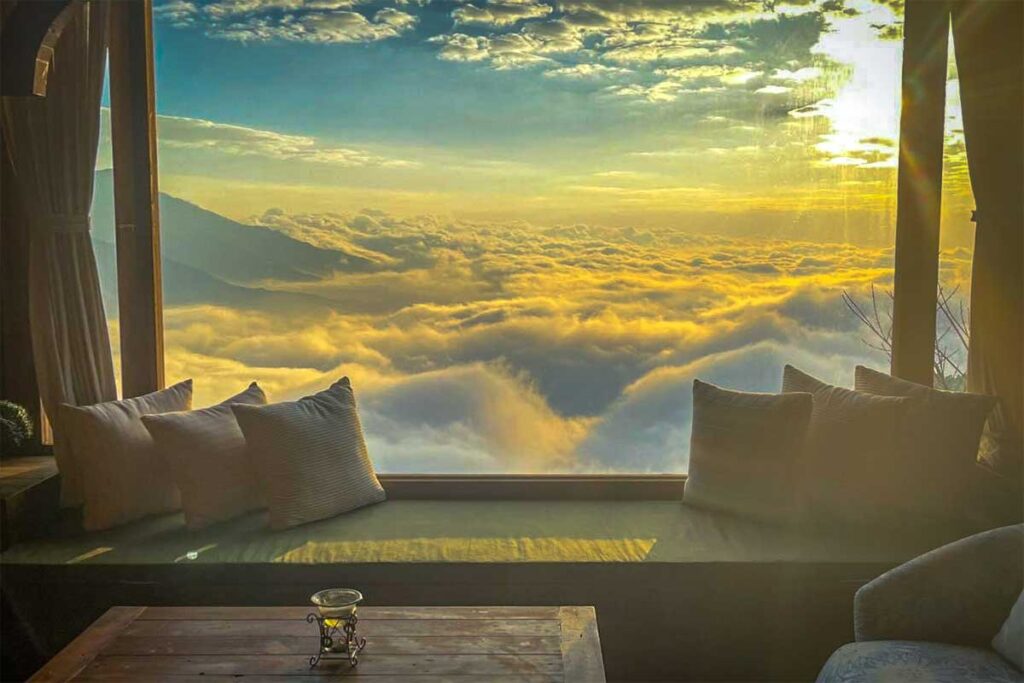
Several small cafés along the road to the Dinosaur Spine serve coffee and simple breakfasts with wide-open vistas. Some travelers stay at homestays por lodges where they can see the clouds from their bedroom window, depending on the weather and location of the stay.
This makes Ta Xua surprisingly accessible for those looking for a peaceful escape rather than a physical adventure. No trekking required—just early rising and a bit of luck with the weather.
3. Trekking in Ta Xua – From day hikes to multi-day adventures
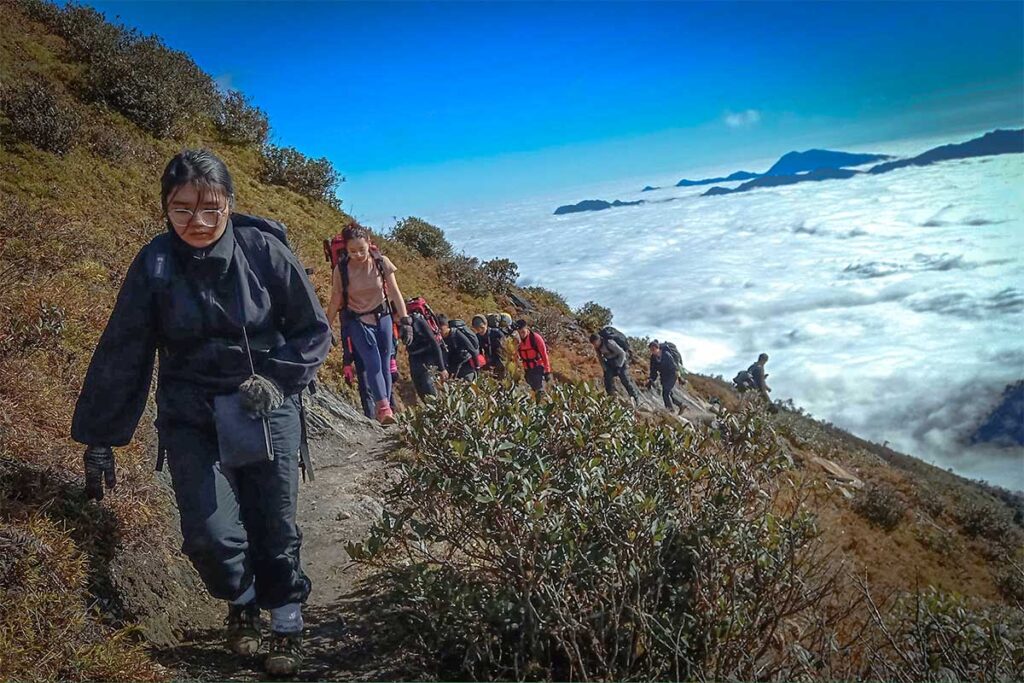
For more serious hikers, Ta Xua offers some of the most atmospheric trekking in northern Vietnam. Trails wind through moss-covered forests, bamboo groves, and misty ridgelines, often reaching altitudes over 2,800 meters. The terrain can be steep and muddy, especially after rain, but the sense of isolation and natural beauty is unmatched.
The most popular multi-day trekking routes begin in Tram Tau (Yen Bai Province), on the eastern side of the range. Treks typically last two or three days, include nights in basic huts, and cover challenging sections like the Dinosaur Spine and Ta Xua Peak (2,865m). Other highlights include the mossy “magic forest,” Turtle Head Rock, and wide views from cloud-shrouded summits.
These routes are best done with a local guide and porter, as trails are unmarked, and weather can shift quickly. Overnight camping is rustic—expect no electricity, limited water, and simple sleeping arrangements.
If you’re not up for a full trek, lighter half-day walks are also possible from Ta Xua town. Ask your accommodation for local paths or short guided hikes.
Explore Ta Xua on a guided trek
Want to hike the dinosaur spine or reach Ta Xua’s remote summit? Join our 2-day cloud-hunting adventure or the full 3-day trek to the peak.
Iconic Photo Spots & Natural Landmarks
In addition to cloud hunting and trekking, Ta Xua has several small landmarks and scenic spots worth visiting—especially for photography.
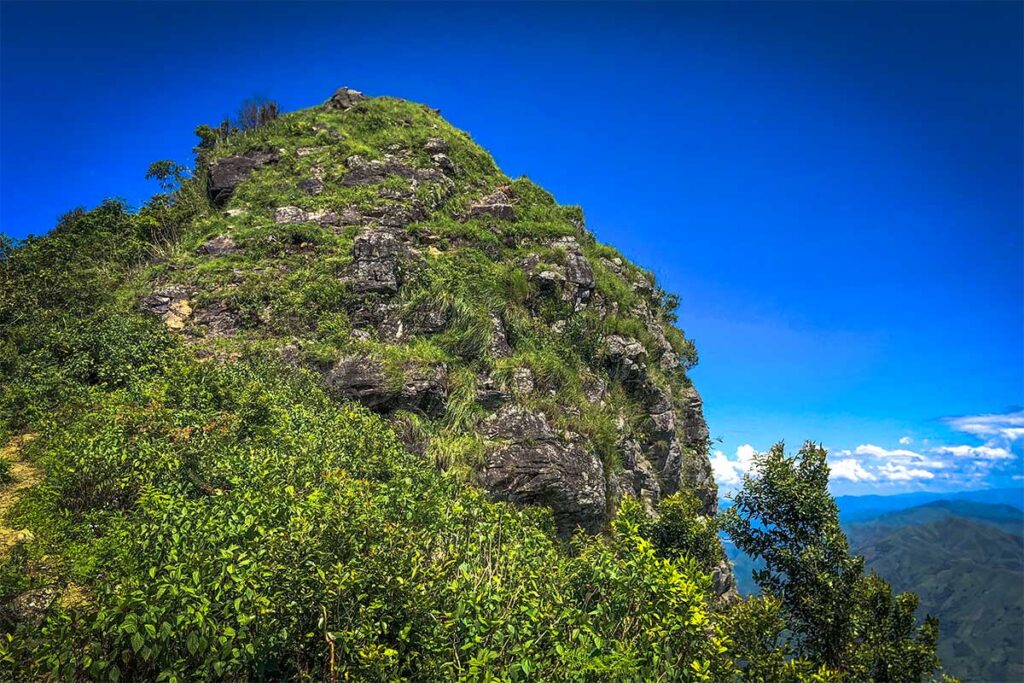
Turtle Head Rock: A rocky ledge shaped like a turtle’s head sticking out of the ridge. Popular photo spot near trekking routes.
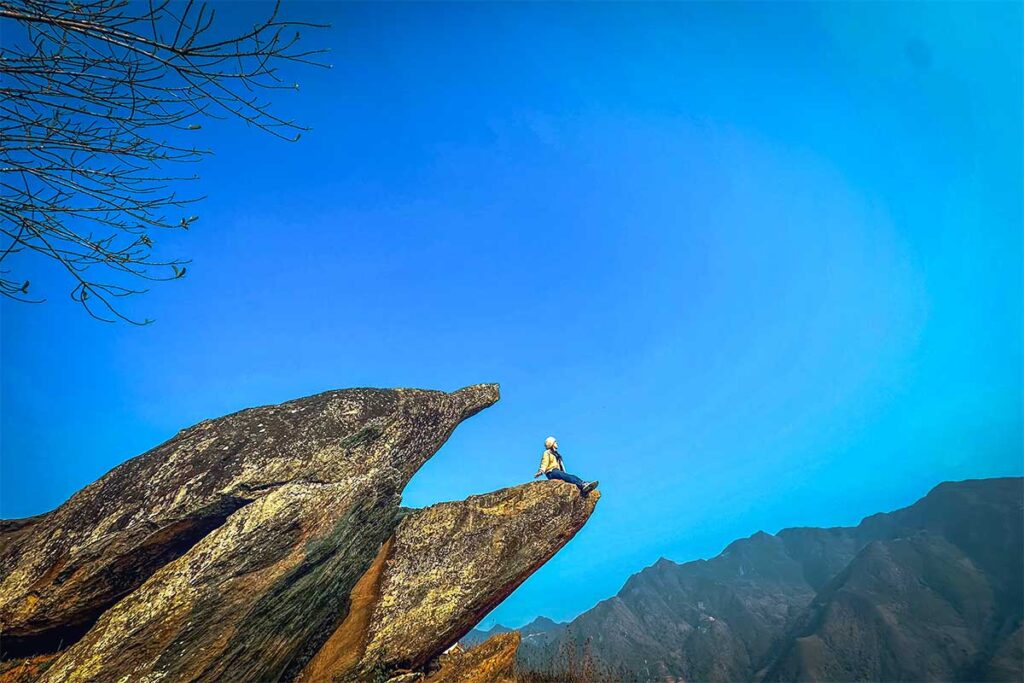
Dolphin Beak Rock: A protruding stone ledge resembling a dolphin’s nose, hanging slightly over a drop with mountain views behind. Best for daring photos.
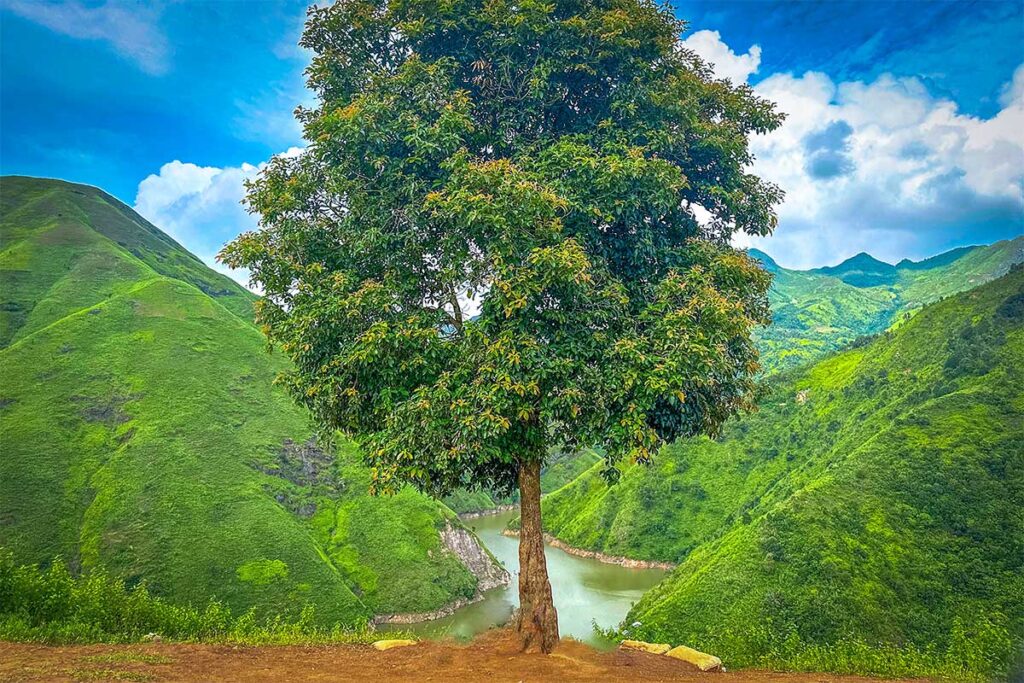
Lonely Tree: A solitary tree on a bare hill with stunning views. Nothing dramatic about the tree itself—but the spot is scenic and peaceful.
Đỉnh Gió (Windy Peak): Located about 3 km from town, this is a favorite spot for sunset and light camping.
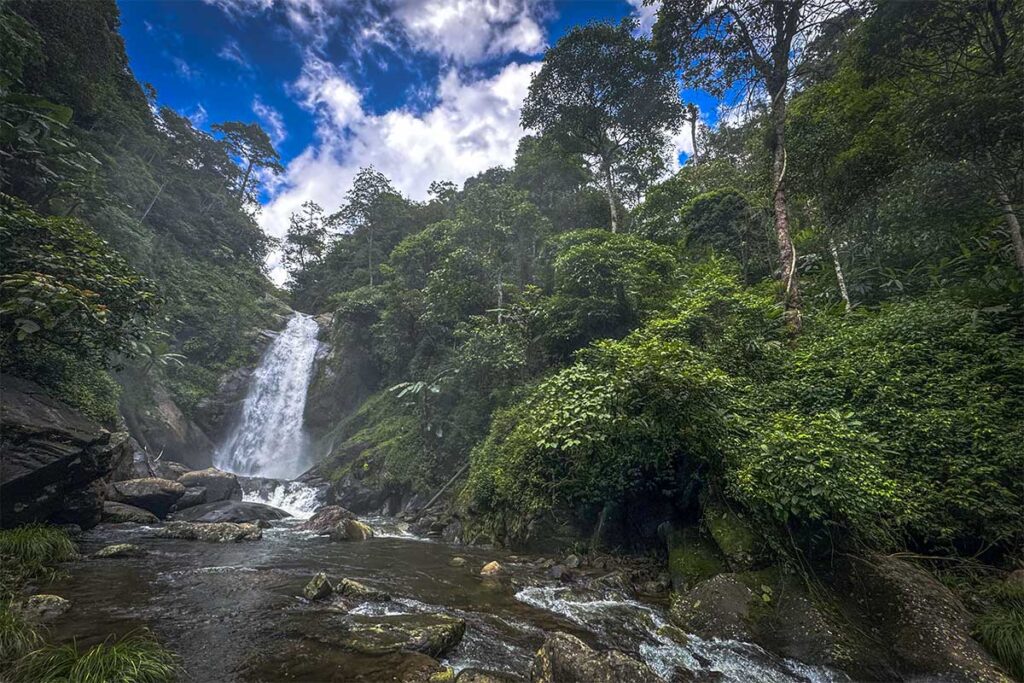
Ta Xua Primeval Forest: A protected area with ancient trees, dense vegetation, and high biodiversity. It’s part of the reason the region remains so wild.
These sites are scattered across the area and easiest to reach if you’re on a motorbike or taking part in a longer guided trek.
Hmong Culture & Herbal Baths
Ta Xua is home to Hmong communities, many of whom operate homestays or offer traditional experiences to travelers. One of the most unique is the herbal hot bath—a soothing soak made from local medicinal plants.
After a long trek or a cold morning of cloud hunting, these baths offer welcome relaxation. They’re usually prepared by Hmong women using large wooden tubs, heated over fire, and cost just a small fee. Not all homestays offer them, so it’s worth checking in advance or asking around.
Depending on when you visit, you might also come across local festivals or cultural gatherings, particularly around the Lunar New Year and Hmong calendar events. These aren’t staged for tourists, but if you’re invited or nearby, they can be a memorable insight into mountain life.
Best time to visit Ta Xua
Planning your trip to Ta Xua around the right time can make a big difference—especially if you’re coming for cloud hunting. This section breaks down the best times by season, time of day, and even which days of the week to choose (or avoid).
Best time of year
The ideal season to visit Ta Xua is from late November to March. During these cooler months, the combination of high humidity and cold mountain air creates the perfect conditions for dense morning cloud formations—the iconic “cloud sea” that Ta Xua is famous for.
Skies tend to be clearer, and while temperatures can be cold at night (especially in December and January), daytime weather is usually dry and pleasant. It’s also the safest time to trek, as trails are less muddy than during the rainy season.
Unlike Mu Cang Chai, Ta Xua is not known for its rice terraces, so there’s no need to plan your visit around the harvest or flood seasons. This is a cloud-focused destination, and winter is the time to come.
Best time of day
For the best chance to see the clouds, aim to be at the viewpoint or trailhead between 5:00 and 7:00 AM. The earlier, the better—many travelers arrive before sunrise to catch the first light breaking over the cloud layer.
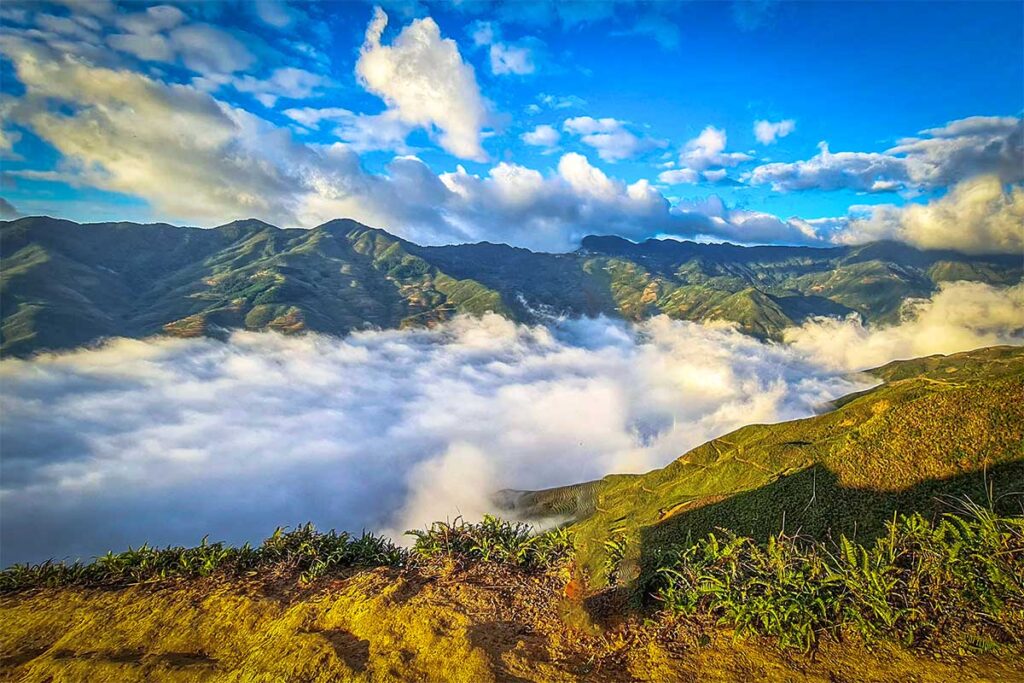
After 7:30 or 8:00 AM, the clouds often start to lift or thin out, especially on sunnier days. By mid-morning, the cloud sea may have completely vanished, replaced by clear skies and distant mountain views.
Travel tip: If you’re staying overnight near the Dinosaur Spine viewpoint, set your alarm early and head out in the dark with a flashlight. The reward is worth the early wake-up.
Best time of the week
Ta Xua is still relatively unknown among foreign travelers, but it’s become a popular weekend escape for Vietnamese tourists, especially during cloud season. On Saturdays and Sundays, expect more motorbikes, busier cafés, and crowded sunrise viewpoints—particularly at the Dinosaur Spine.
If you prefer a quieter experience, aim for weekdays (Monday to Thursday) when the trails and cafés are nearly empty. Accommodation is easier to book and sometimes slightly cheaper as well.
Some remote homestays and herbal bath experiences also have limited availability on weekends, so booking ahead is recommended if you can’t avoid Saturday night stays.
Where to stay in Ta Xua
Ta Xua Town vs Remote viewpoints
Most accommodation in Ta Xua is concentrated around a high-altitude ridge above Bac Yen Town, often referred to as Ta Xua Town. The area itself is not an official town but a cluster of homestays, cafés, and hillside lodges spread along the narrow mountain road leading to the cloud-hunting viewpoints.
There are two main choices for where to stay:
- Ta Xua Town (real name: Xim Vang / Hang Dong area) is a small hub with basic services, such as local eateries, parking areas, and access to the Dinosaur Spine trail. It’s easy to reach and close to the main road, but views are often more limited, and the surroundings feel a bit more built-up.
- Remote hillside lodges, located further along or above the main ridgeline, offer panoramic views right from your room or balcony. These are often quieter, more scenic, and ideal for seeing the cloud sea at sunrise without leaving your bed. However, they tend to be more isolated, with limited access to shops or restaurants nearby.
While staying in Ta Xua Town is convenient, many travelers prefer the lodges perched along the mountainside. Waking up above the clouds is what Ta Xua is all about—and staying higher up gives you the best chance to experience it.
Homestays and Local Lodges
Ta Xua has seen a boom in small accommodations, with options ranging from simple family-run homestays to modern mountain lodges with stylish designs and hot showers. Despite the name, not all “homestays” are traditional ethnic homes. In fact, many are owned by people from the lowlands who saw the tourism potential of the area.
- Modern homestays usually have better insulation, comfortable beds, and private bathrooms. You won’t typically share meals, but the rooms are nicer, often with heating, and the service is more polished.
- Ethnic family stays, while more basic, offer a warmer, communal feel. You’ll likely eat with the hosts, sleep in wooden houses, and have a more immersive cultural experience. These are best suited to travelers who don’t mind a little rustic charm.
There’s now a wide range of options, from cozy wooden cabins to multi-room lodges, and many places have cloud views right from the room.
Recommended places to stay
Here are three standout options in Ta Xua, each offering a different type of experience:
Ta Xua Ecolodge
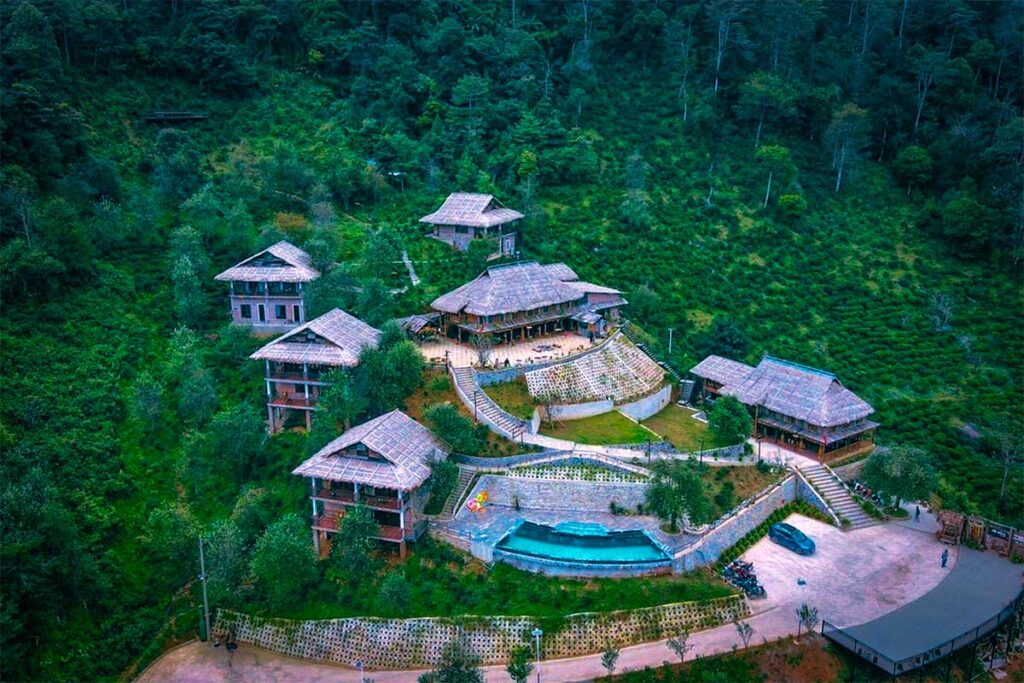
This lodge is perched high in the mountains, offering sweeping views from nearly every corner—balconies, common areas, and even the dining room. Rooms vary in size, from small budget options to spacious hillside suites with private views. The road up is steep in parts, but the peaceful setting, warm meals, and hot showers make it a rewarding stay for those seeking a remote escape close to the clouds.
Paang Village
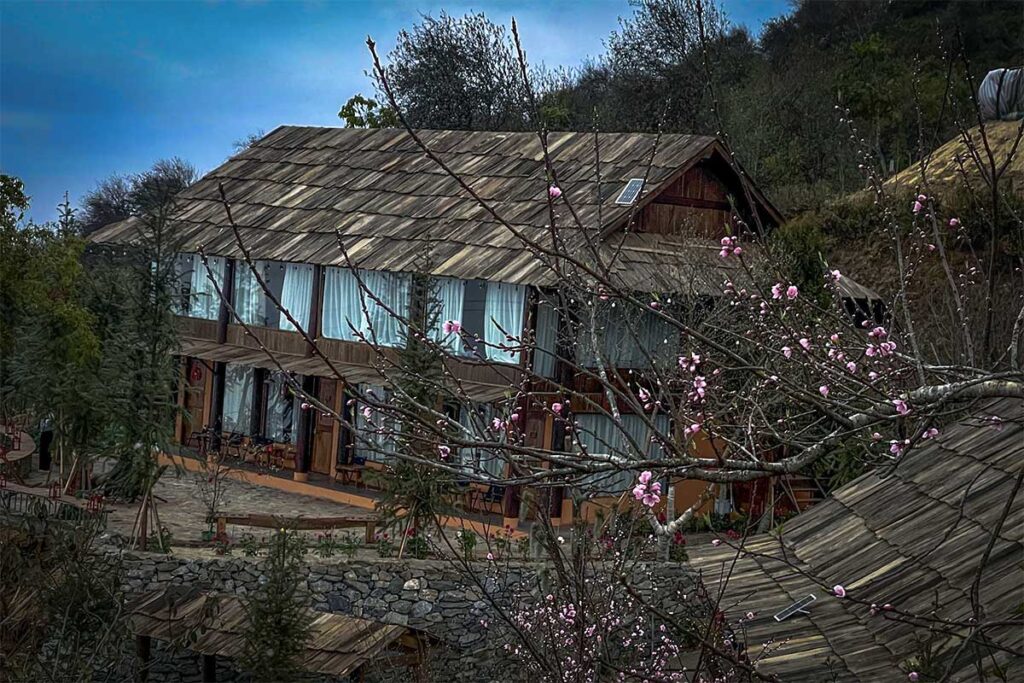
A beautifully designed lodge located a short drive from Windy Peak, Paang offers both comfort and authenticity. It’s peaceful, surrounded by vegetable gardens and flower beds, with rooms that are clean, warm, and thoughtfully decorated.
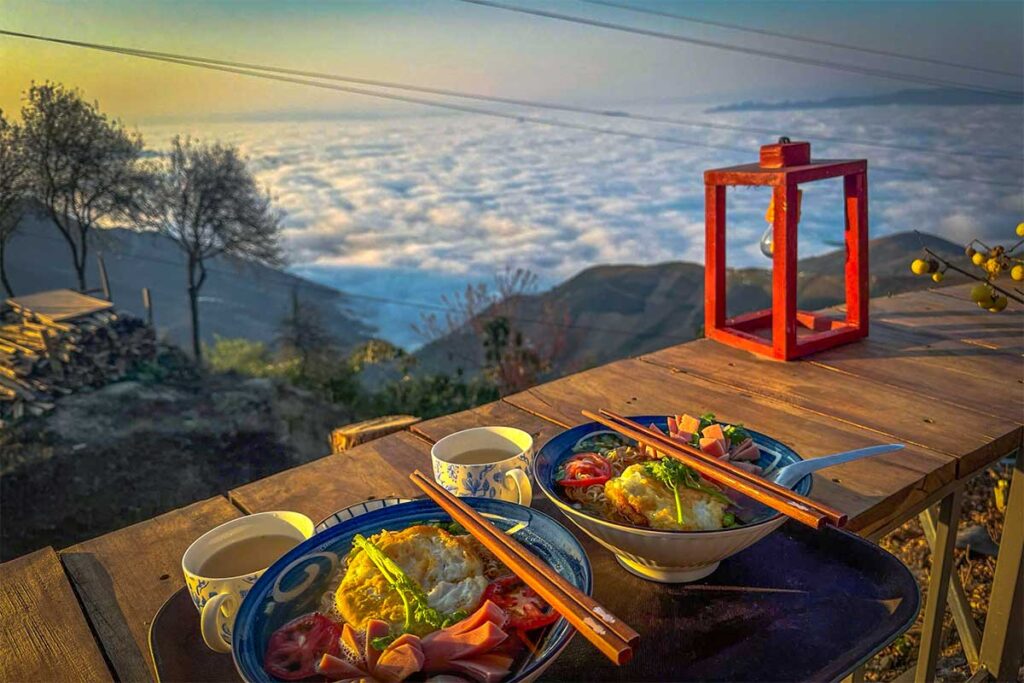
Some rooms open directly to a sea of clouds. The food—much of it grown onsite—is a highlight, and the quiet setting makes it ideal for couples or anyone wanting to unwind.
1941M Homestay Ta Xua
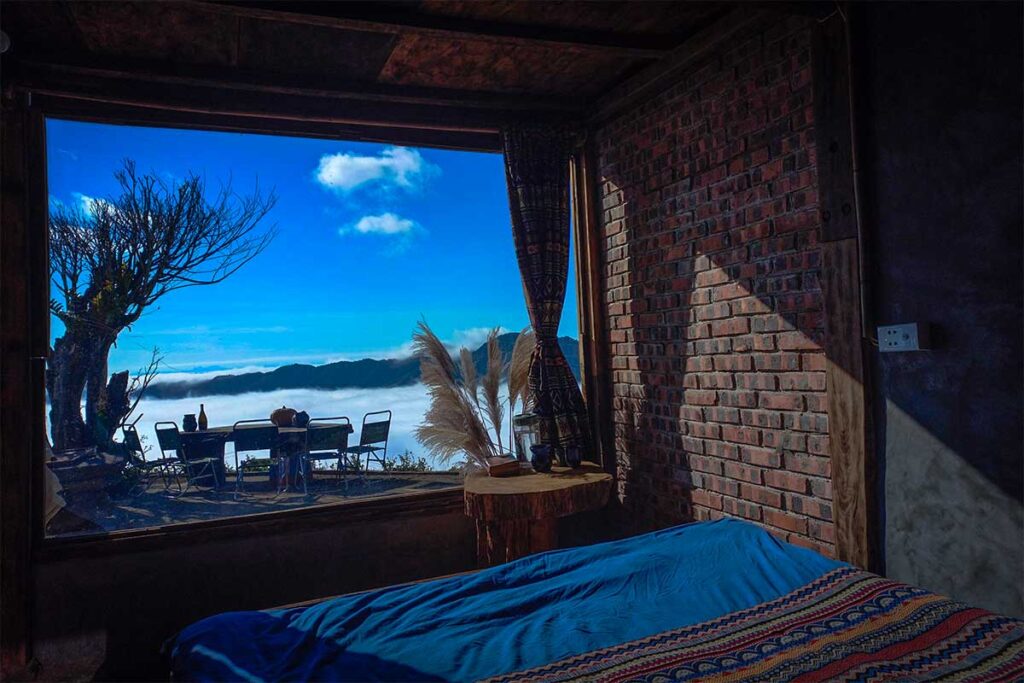
This homestay blends simplicity with personality, offering a remote, family-run atmosphere and spectacular cloud views. The wooden cabins are cozy and basic, but the vibe is warm and welcoming, with homemade food, mountain dogs, and a social setting that attracts long-stay travelers. Great for budget-conscious visitors, solo travelers, and those looking to feel truly at home in the mountains.
Ta Xua vs Tram Tau – Two sides of the mountain
If you’ve been researching Ta Xua, you may have come across both Bac Yen (Son La) and Tram Tau (Yen Bai) as starting points. That’s because Ta Xua Mountain straddles the border between the two provinces—and travelers can approach it from either side, depending on what they want to do.
Bac Yen / Ta Xua Town (Son La Province)
This is the easiest and most popular side for general visitors. The small town of Ta Xua, located just above Bac Yen, offers direct access to the Dinosaur Spine viewpoint, cloud-hunting cafés, and scenic homestays. It’s ideal if your main goal is to see the cloud sea, take photos, or enjoy mountain views without doing a long trek.
There are also light walking trails and some short treks in this area, but it’s not the place for extended hiking or camping routes.
Tram Tau (Yen Bai Province)
Tram Tau lies on the opposite side of the range and is the starting point for serious trekking. Multi-day hikes to the Ta Xua summit and surrounding peaks usually begin here, often involving local porters, overnight hut stays, and rugged trails through bamboo forest and mossy ridges.
This side is more about the challenge and immersion—you won’t find cloud-view cafés or easy road access to viewpoints here, but you will experience the more remote, wild side of the mountain.
Crossing between the two
Some trekking routes cross from Tram Tau to Bac Yen or vice versa, especially on longer two- or three-day itineraries. But there’s no direct road linking both sides of the mountain—you need to go around by vehicle, which takes several hours.
If you’re planning a trip, it’s best to choose your entry point based on your priority: light exploration and views from Ta Xua Town, or adventurous trekking from Tram Tau.
Is Ta Xua worth it?
If you’re into mountains, trekking, and raw scenery, then yes—Ta Xua is absolutely worth it. It’s one of the most visually striking places in Vietnam, especially if you’re lucky enough to catch the cloud sea from the Dinosaur Spine or during a multi-day trek.
But to be clear: Ta Xua is not a destination for everyone. If you just want to drive up, see the clouds, and leave the next day, the experience can feel a bit short-lived—especially if the weather doesn’t cooperate. You’ll spend more time getting there than actually doing things, unless you combine it with other outdoor activities.
That’s why Ta Xua works best as a 2- to 3-day trip, ideally with a trek or some deeper time in nature. It’s also harder to combine with other famous northern destinations unless you’re comfortable navigating remote roads or booking a car with driver. That said, the journey itself is part of the appeal—the mountain roads are stunning, and you’ll see a side of Vietnam that few travelers reach.
Ready to experience Ta Xua?
If Ta Xua sounds like your kind of adventure, check out our epic trips — from dramatic ridge treks to local homestay experiences.
What’s nearby – Planning a broader trip
Ta Xua is remote, but not isolated. If you’re planning a longer trip through northwest Vietnam, there are a few destinations worth combining—just be aware that even “nearby” places often require 3–6 hours of driving, and you’ll need your own transport or a private driver.
- Moc Chau (130 km / ~3.5 hours) – Known for tea hills, flower fields, and waterfalls. A good next stop if you’re continuing west.
- Mu Cang Chai (175 km / ~5 hours) – Vietnam’s most famous rice terraces. Best in harvest season (Sept–Oct), but scenic year-round for trekking.
- Dien Bien Phu (255 km / ~6 hours) – Remote city with war history, ethnic villages, and access to the far northwest. Only worth it if you’re doing a big loop.
These routes are best done by motorbike, Easy Rider tour, or car with driver, as there are no direct buses between these mountain districts.
